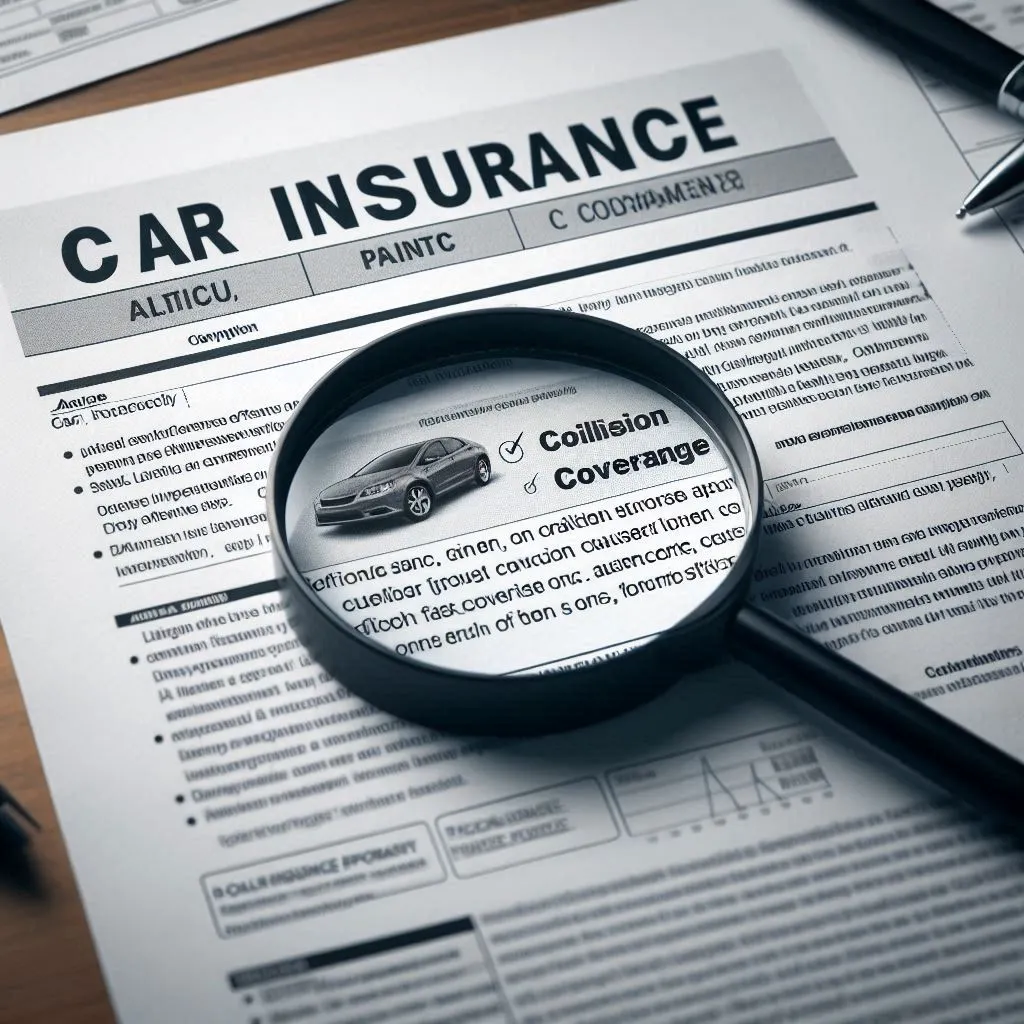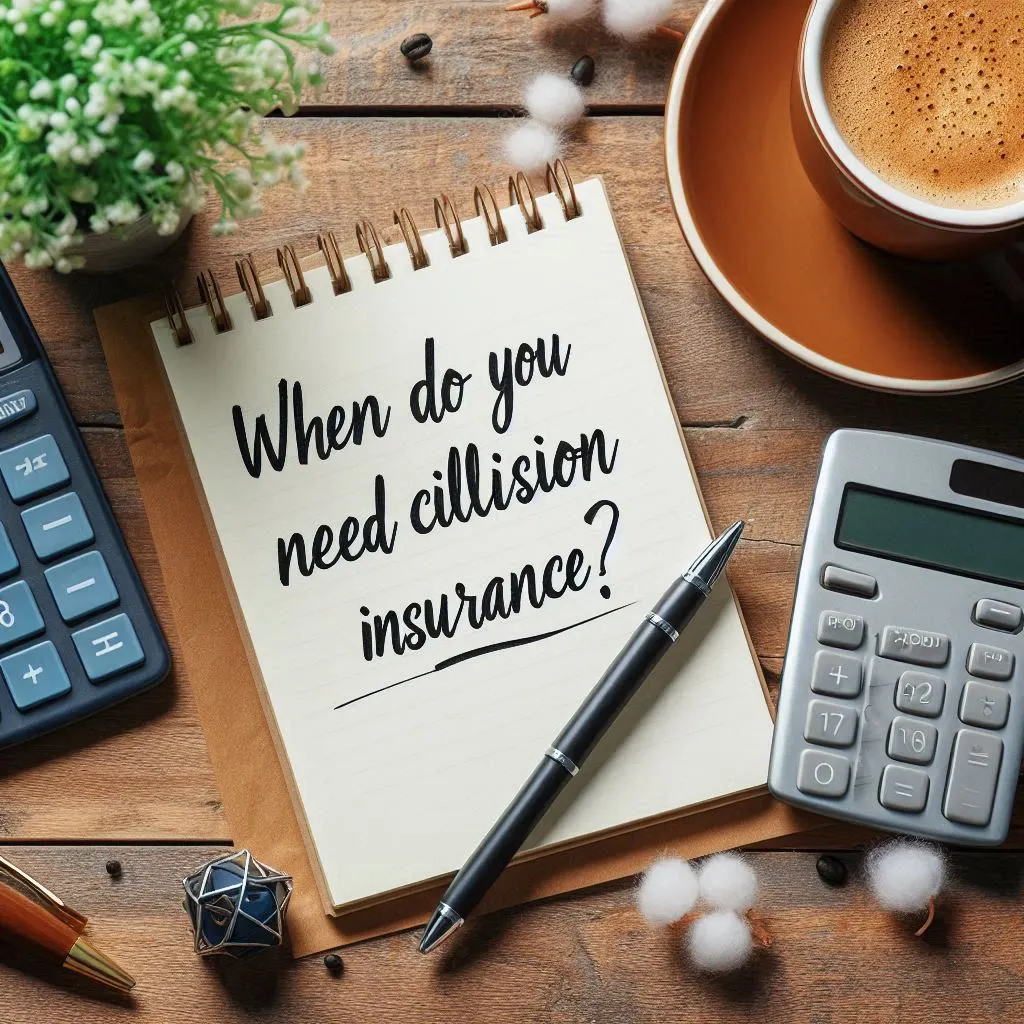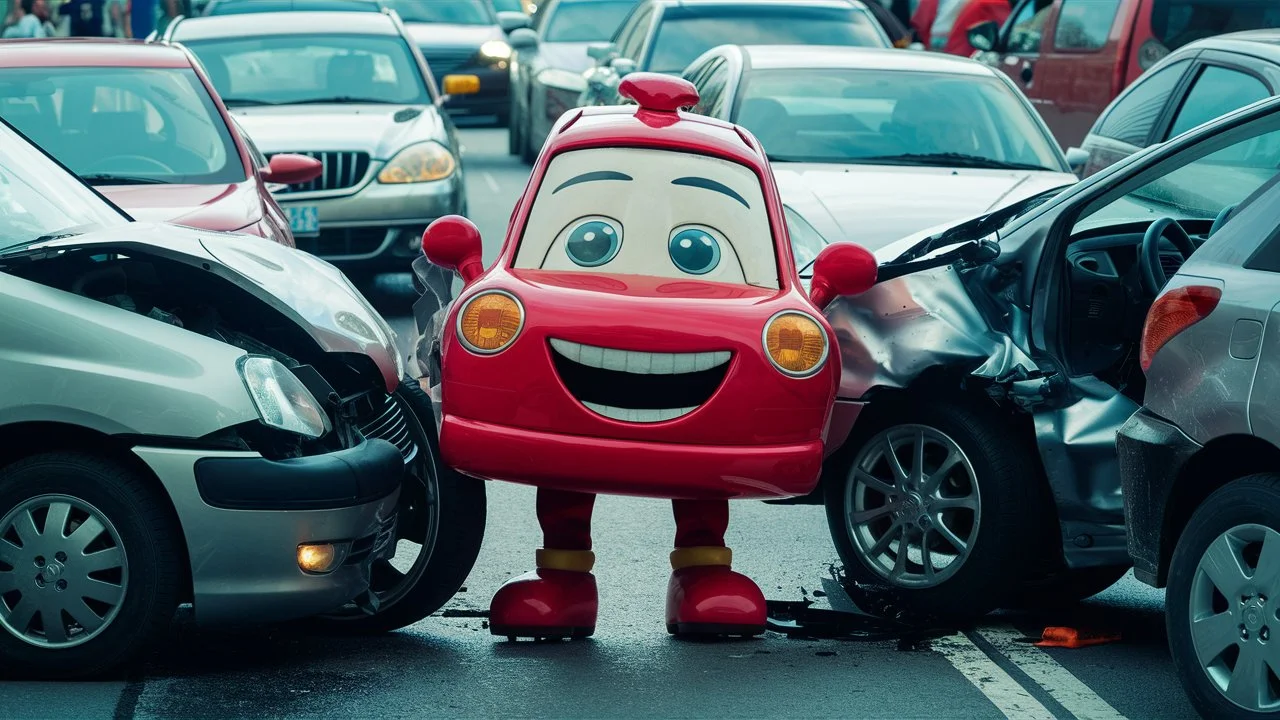collision insurance covers” is an essential part of your vehicle coverage coverage. It covers the price of repairing or replacing your vehicle if you’re concerned about a coincidence. Without it, you can face steeply-priced payments for:
– Damage from a collision with every other automobile
– Damage from hitting an item like a tree or pole
Collision coverage is often required if:

– You have a loan or lease for your car
– Your vehicle is new or precious
Even if it’s not mandatory, collision insurance offers a sense of security. It safeguards your investment and spares you from bearing the brunt of repair costs after an accident. In the following sections, we will delve into collision insurance, including its functioning, cost-influencing factors, and strategies to save on costs.
What is Collision Insurance Coverage?
collision insurance covers” is a type of automobile coverage that allows you to pay for upkeep or substitute if your automobile is broken in a crash. It kicks in while your car collides with another vehicle or item, like a tree, fence, or building.
This insurance differs from comprehensive coverage, which covers harm from occasions other than collisions. Comprehensive covers robbery, vandalism, weather events, or hitting an animal.
Collision coverage is generally elective until you are financing or leasing your vehicle. Most creditors require you to carry each collision and complete regulations till the mortgage is paid off. That way, they’re blanketed if your car is severely broken or totaled.
When you record a claim to your collision insurance, the coverage agency pays out based totally on your coverage details. Typically, they will cover the vehicle repair cost minus your deductible quantity. Or if the automobile is totaled, they may pay out the actual coin price of the car before the accident.
Let’s look at an example:
Say you, by accident, rear-ended every other automobile at a stoplight, and your automobile sustained $4,000 in damages. If your collision deductible is $500, your insurer could pay out $three 500 for repairs after you pay the $500 deductible. However, if the entire restore prices exceed the auto’s fee, it may be considered “totaled.” In that case, your insurance organization could reduce your test for the automobile’s actual coins fee minus the deductible.
Collision claims are taken into consideration as “at-fault” incidents. That means making a claim should cause your insurance prices to rise at renewal time, unlike a not-at-fault comprehensive claim. The amount your costs boom relies upon in your insurance corporation’s pricing structure.
collision insurance covers” provides a financial safety net from costly repair bills if you cause an accident. It ensures you can get your vehicle back on the road or receive a cash payout if it’s deemed a total loss.
When Do You Need Collision Insurance?

Collision coverage is only sometimes legally required in most states. However, there are several conditions in which it is particularly endorsed or obligatory. Having the right collision insurance covers” can save you from expensive repair bills after a coincidence and defend your investment in your vehicle.
You Likely Need Collision Insurance If:
Financed or Leased Vehicle
If you are financing or leasing your automobile, collision insurance is not just a requirement, but a crucial protection. It ensures that your lender’s or leasing company’s investment (your car) is safeguarded in case of a collision. Most creditors mandate comprehensive coverage for both collision and comprehensive until the loan is fully paid off.
New or Valuable Vehicle
For people with a new or high-value car, collision coverage makes an economic feel. The repair charges for new vehicles with superior technology may be extraordinarily steeply-priced. With collision coverage, you could easily face repair payments within the heaps after a collision. Collision insurance facilitates maintaining your investment in the car.
Living in a High-Risk Area
Some areas pose a higher risk of accidents due to heavy traffic, poor road conditions, or a large number of uninsured drivers. If you reside or frequently travel in such high-risk areas, collision insurance acts as a shield against the heightened risk of an accident.
Your Vehicle Holds Significant Value

Collision insurance can be worthwhile even for older, paid-off motors that hold enormous fees. If the vehicle’s value outweighs capacity coverage premiums over some years, collision coverage could make a financial feel to protect your asset. On the other hand, collision insurance won’t be vital if you have an older automobile worth less than standard collision premiums over some years. Evaluate repair costs against insurance costs yearly.
Ultimately, collision insurance provides a financial buffer if your automobile is damaged in an at-fault twist of fate. It saves you from unexpectedly high repair bills due to a collision with another car or object. Many drivers choose this peace of mind while financing or using a brand-new, valuable vehicle.
How Does Collision Insurance Work?
If you are concerned about a coincidence, collision insurance covers your car’s repair or replacement fees. However, some crucial details about how it works and what is covered are included.
Deductibles
When you record a collision claim, you must pay a deductible before your coverage kicks in. Deductibles typically vary from $250 to $1,000. The higher your deductible, the decrease your annual top-class charges.
For instance, if you have a $500 deductible and upkeep is $three 000 after a twist of fate, you pay $500 out-of-pocket, and your insurer covers the ultimate $2,500.
Claims Process
To file a claim, you must provide detailed information about the accident and the damage to your vehicle. Your insurer may request photos, repair estimates, and a police report. An adjuster will assess the damage and determine if it’s a covered loss.
If approved, you could get repairs carried out at a mechanic of your preference. Your insurer might also have preferred repair shops to cover expenses. Once complete, you must provide the final restore invoice to be reimbursed minus the deductible amount.
Repair vs. Total Loss
If upkeep is less than your car’s value, the insurer pays to fix it after the deductible. But if the repair prices exceed the car’s worth, it will probably be considered a complete loss.
In a total loss scenario, the coverage agency will reduce you take a look at the vehicle’s actual cash value (ACV) earlier than the twist of fate, minus the deductible. The ACV factors within the car’s age, mileage, and circumstance
Read More: Appraisal Clause Auto Insurance
Rental Cars

collision insurance regularly provides rental automobile coverage after a coincidence for a constrained range of days. It lets you have brief wheels at the same time as your car is in the shop. However, condominium reimbursement amounts and periods vary by way of coverage.
Overall, collision coverage is designed to repair or update your automobile efficaciously after an insured twist of fate. Understanding deductibles, the claims method, rental provisions, and total loss assessments ensure you realize what to expect while submitting a declaration.
Factors Affecting Collision Insurance Rates
Collision insurance costs vary considerably among drivers based on numerous score factors that insurers use to calculate rates. Understanding these factors can help you make knowledgeable selections about your coverage and identify cost-saving approaches.
Vehicle Make, Model, and Year
The kind of automobile you force greatly affects your collision rates. Newer, expensive motors usually cost more to insure for collision than older, much less precious fashions. Repair charges for luxurious and high-cease vehicles are also pricier due to specialized elements and technology.
Driving Record
Your use history weighs closely on prices. Drivers with injuries or transferring violations on their record pay better charges for collision coverage. Conversely, people with an easy-to-use document typically qualify for decreased rates.
Location
Where you live and force affects collision charges. Urban areas with better visitor density, street congestion, and coincidence frequency imply better rates than rural areas. Rates also range between states and zip codes based totally on claims statistics.
Deductible Amount
As noted, higher deductibles suggest lower premiums because you’re assuming an extra premature threat. Raising your collision deductible from $250 to $1,000 may save you masses yearly, but you’ll pay more out-of-pocket if you report a claim.
Driver Age and Experience
Statistically, younger drivers under the age of 25 tend to have more injuries, making them higher collision risks. Teen drivers, in particular, face very high costs until they benefit from more experience behind the wheel. Mature drivers typically see the lowest charges.
Annual Mileage
The more power you have annually, the extra risk you have of a coincidence. Those with longer commutes or forced-to-work functions generally pay higher collision premiums than drivers with low annual mileage.
Credit History
In most states, your credit score can affect insurance charges, along with collision insurance. Those with better credit score rankings tend to acquire decreased prices compared to clients with poor credit score histories.
With expertise in these rating factors, you could adjust your insurance tiers or other coverage information to get the lowest collision quotes without sacrificing vital safety.
Cost-Saving Strategies for Collision Insurance
While collision insurance covers” gives valuable protection, the charges can increase over the years. Fortunately, there are several strategies you may appoint to reduce the prices related to collision coverage:
Increase Your Deductible
Elevating your deductible quantity is one of the best ways to decrease your collision premium. Requesting a higher deductible of $1,000 instead of $500 should cause good-sized annual savings. Make sure you have enough cash reserves to cover the higher out-of-pocket cost if you get into a twist of fate.
Bundle Policies
Most insurers offer discounts, sometimes known as a “multi-coverage” or “multi-line” discount, when you bundle multiple policies, such as vehicle and domestic coverage. This bundling technique can lessen your regular fees, such as for collision insurance.
Take Advantage of Discounts
insurance groups provide a whole lot of reductions you could qualify for, along with the following:
– Safe driver/proper using document
– Low annual mileage
– Vehicle protection capabilities like anti-lock brakes
– Defensive driving course
– College scholar living away
– Paid in complete/automated bill
Shop Around
Collision rates vary considerably between insurance companies, even for the same driving force and coverage stages. When evaluating prices, get charges from a minimum of three to five groups to find an excellent deal.
Maintain a Good Driving Record
One of the most significant factors affecting collision prices is your use history. By avoiding accidents and traffic violations, you can obtain reductions and lower-risk pricing from insurers.
Drop Coverage on Older Vehicles
For older cars with lower values, it could be possible to drop collision (and comprehensive) coverage as soon as premiums exceed around 10% of the car’s value. The savings could outweigh the benefit of getting coverage.
Using intelligent price-cutting strategies, you can discover a less expensive balance between your collision top-class expenses and the valuable protection this insurance offers.
Choosing the Right Collision Insurance Coverage
With collision coverage, there’s a nobody-length-fits-all answer. The correct quantity of coverage depends on your specific circumstances and comfort stage with the threat. Here are a few critical concerns while selecting the proper collision coverage:
How dangerous will you be if your automobile is broken in a twist of fate? Those with decreased hazard tolerance will want better collision coverage limits and a lower deductible quantity to reduce out-of-pocket expenses. Higher hazard tolerance may suggest a better deductible.
Consider Your Vehicle’s Value
The price of your automobile is a primary component. Is it new and highly-priced or an older model with low cost? Collision coverage provides more experience for newer, more treasured vehicles, in which restore fees are better than your top-class payments over some years.
For an older vehicle worth $three,000 as an example, collision insurance may not be profitable if your premiums exceed 10-15% of that fee annually. You may be higher off assuming that danger yourself.
Balance Premiums vs Coverage
There is a trade-off between the amount of collision insurance you select and the corresponding top-rate costs. A higher deductible lowers rates but will increase your portion of repair payments after an accident. Finding the right balance is fundamental.
Many professionals advocate a $500-$1,000 deductible range, which can offer enough insurance while keeping charges practicable. But alter this based on your monetary ability to pay a higher deductible out-of-pocket.
Review Coverage Periodically
Your collision insurance covers” needs can alternate over the years as your vehicle ages or your monetary situation evolves. Review your insurance limits and deductibles annually to ensure proper protection relative to your vehicle and insurance prices.
Ultimately, the “proper” collision coverage is the amount that gives you peace of mind financially at an inexpensive fee based on your comfort level with hazards. This sweet spot will be one of a kind for everybody who relies on their car and personal circumstances.
Collision Insurance and Rental Cars
When renting a car for commercial enterprise or pride, you’ll want to recollect if you require additional collision insurance covers”. Rental corporations offer numerous options that can get difficult. Here’s what you need to recognize about collision protection and condo automobiles:
Your Auto Policy
In most instances, your current auto insurance coverage’s collision coverage will make it bigger for a condominium vehicle you use quickly. However, you would still be accountable for paying the deductible quantity if you want to document a declaration of damages.
Some insurers even provide better coverage without a deductible for apartment cars. It’s wise to check your coverage information or call your agent before renting to determine if you are already covered.
Rental Company Insurance Options
Rental car businesses will push their coverage products while you pick up the vehicle. The essential coverages provided are:
Collision Damage Waiver (CDW) or Loss Damage Waiver (LDW)
It is collision coverage via the condominium business enterprise. If the apartment vehicle is broken, the CDW/LDW relieves you of monetary obligation for the repairs/alternative.
Liability Insurance
It provides legal responsibility protection if you cause injuries or damages to others while riding the apartment. Your non-public car coverage already has enough legal responsibility limits.
Personal Accident Insurance
It covers scientific expenses for you and your passengers if you are injured while driving the apartment vehicle.
The apartment corporation makes those coverages sound vital. However, they can upload $15-$30 in steps with a day in your overall value. You’re probably already blanketed through your non-public auto policy.
Credit Card Coverage
Many credit score card corporations offer computerized collision insurance for rental cars when you operate that card to pay for the condominium. This may be secondary to your private policy or primary as a standalone.
Terms vary with the aid of the issuer. However, it could offer protection and prevent paying extra condo enterprise prices. Just be privy to any coverage exclusions.
By understanding your diverse options and coverage, you can save money on duplicative condominium car coverage expenses while having the proper collision safety.
Real-Life Examples and Conclusion
To illustrate the importance of having adequate collision coverage, let’s look at a couple of real-life examples:
Case Study 1: The Fender Bender
Jessica was stopped at a pink light and rear-ended by the vehicle behind her. Though she turned unhurt, the collision prompted $6,200 in harm to the rear bumper, trunk, and frame panels of her 2-year-old sedan.
Since Jessica had collision insurance with a $500 deductible, her insurance included $5,seven-hundred of the repair fees after she paid the $500 deductible out-of-pocket. She might have been caught with the $6,200 invoice without this insurance.
Case Study 2: The Total Loss
When he struck a patch of ice, lost manipulate, and slid sideways into a concrete barrier, Paul turned into driving his five-year-old pickup truck. The collision brought about intense damage along the entire motive force’s facet.
The insurance adjuster determined the truck was totaled because maintenance passed its $12,000 marketplace cost. Paul had a $1,000 deductible collision coverage. His insurer cut him a test for $11,000—the truck’s price minus the deductible.
This payout allowed Paul to purchase a newer used truck while avoiding the overall $12,000 loss on his totaled automobile way to having collision protection.
As those examples exhibit, collision coverage may be worthwhile for paying predominant restore payments and changing your car if it’s totaled after an at-fault coincidence. Without it, you could, without problems, face fees strolling into the thousands or tens of heaps out-of-pocket.
Ultimately, collision insurance covers”provides a vital economic safeguard for one of your most valuable assets—your vehicle. Carefully assess your modern-day policy limits and fees to ensure sufficient safety at a low price point. Be sure to realize the importance of this crucial insurance before an accident.
Frequently Asked Questions
1. Do I need collision insurance if my car is paid off?
While creditors often require collision coverage for financed automobiles, it becomes non-obligatory once your car mortgage is paid completely. However, maintaining this insurance may be a great concept, mainly if your car is relatively new and valuable. collision insurance covers”protects your funding by covering repair or alternative costs if you motive a twist of fate.
2. How is the value of my car determined for a total loss claim?
If your insurer deems your vehicle a complete loss after a twist of fate, they’ll pay based on the car’s real cash value (ACV) before the incident. The ACV factors within the vehicle’s make, version, age, mileage, and normal condition to decide its marketplace price. This payout amount is calculated independently by the coverage agency.
3. Can I choose any repair shop for collision repairs?
Most insurers will let you pick a store that is restored to your preference after a collision. However, they may propose or incentivize you to visit cheerful shops in their network to assist in managing charges. Using a non-approved keep won’t affect your coverage; however, your insurer may only pay in keeping with triumphing labor quotes and expenses in your vicinity.
4. Does my collision deductible apply if I’m not at fault?
Your collision deductible handiest applies while you are observed to be at fault in a coincidence. You’ll not need to pay your collision deductible if the opposite driver is deemed at fault. The at-fault birthday celebration’s legal responsibility coverage would cover your restoration charges alternatively.
5. Will my rates go up after a collision claim?
Filing a collision coverage declaration is considered an at-fault incident, and your prices may also boom upon your next renewal, mainly if it is no longer your first claim, how much growth relies upon your insurer’s pricing structure. By preserving a clean driving file, you may avoid fee hikes from multiple collision claims over time.

Justin Taylor is the creative force behind Insuranted.com, a premier destination for insightful and trustworthy insurance information. With a dedication to demystifying insurance complexities, Justin strives to equip readers with the knowledge they need to make smart, informed decisions.










